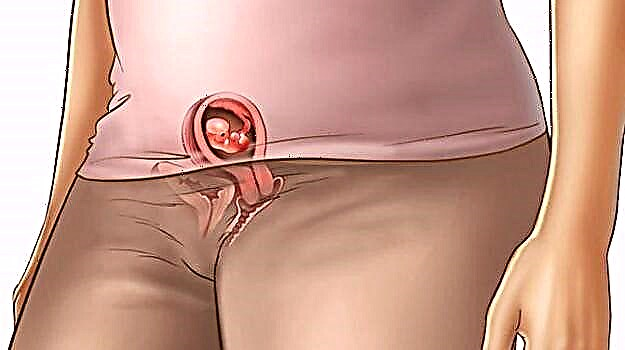
It can be difficult for women with an irregular menstrual cycle to plan for conception, because the day of ovulation itself, which must be determined in order to increase the chances of pregnancy, is a mystery for most of them.
The difficulty is that ovulation, regardless of the duration of the cycle, the age of the woman and other features, does not last long - from 24 to 36 hours, and therefore it is very important to have time to make sure that the mature reproductive cell of a woman nevertheless meets a sperm during this period of time.
With a regular cycle, there are usually no big problems with determining the day of oocyte release. What to do for women with a "floating" unstable cycle, this article will tell.


Regularity and irregularity
A woman's cycle is not always irregular, even if she herself sincerely believes so. Therefore, it is very important to decide which cycles should be considered irregular. First of all, you should remember the duration of your cycles over the past few months.
If the difference in time between the beginning of menstruation and the last day of the cycle before the start of the next menstruation is the same every time - the cycle is regular, this can only be envied. Also, an error of 1-2 days in one direction or another is not considered a pathology. If your period this time came a couple of days earlier or later, this is not a reason to suspect that your cycle is irregular.
An irregular cycle is considered to be such a cycle in which a woman finds it difficult to calculate the date of the next menstruation, since the error (starts earlier, comes with a delay) occurs constantly and is more than 2 days.

Differences in the volume of menstrual flow are also considered a sign of an irregular cycle - they are either scarce or excessively abundant.
The different duration of menstruation is also considered a sign of irregularity.... If in one cycle the discharge lasted 3 days, and in the other - 7, this clearly indicates a violation of the cycle.
If, by a combination of signs, you have irregular menstruation, first of all you need to visit a doctor, since usually the cyclical work of the female body is not disrupted by itself, but under the influence of certain reasons, which in themselves can be an obstacle to conception, or significantly reduce the effectiveness of contraception, which can lead to an unplanned pregnancy.

Why it happens?
A woman's menstrual cycle is regulated and controlled by hormones, it is hormonal disruption that is considered the most common cause of irregularity and disruption of the phases of the cycle. The hormonal background is very sensitive to a wide range of factors, and fluctuations can occur for both external and internal reasons.
External factors of influence are excessive physical exertion, prolonged and prolonged stress, emotional shock experienced by a woman, mental illness and a wide range of neurotic conditions. A malfunction can cause a change in the body's biorhythms, for example, when changing climatic conditions or when traveling with a change in time zone.
The irregularity of the cycle may be due to strict mono-diet, fasting, as well as too fast weight gain. They can affect the cycle and work at night, lack of sleep, and bad habits such as smoking, drinking alcohol, and irregular sex life. Usually, such causes are eliminated over time as the harmful external factor is eliminated.

The endogenous (internal) causes of the irregularity of the female cycle include numerous endocrine ailments, which entail a change in the concentration of hormones in the woman's blood, pathology of the thyroid gland, adrenal cortex, dysfunction of the pituitary gland, hypothalamus.
Sometimes the reasons lie in the dysfunction of the ovaries themselves. Cycle failures occur after hormone therapy and against the background of it, as well as against the background of a long intake of antibiotics, antidepressants and anticoagulants.
These reasons need to be identified and corrected.
Therefore, with a prolonged irregularity of the cycle, it is very important to start planning pregnancy or contraception not with independent calculations of ovulation, but with a visit to the doctor.

Determination of ovulation with an unstable cycle
First of all, women with an unstable cycle should understand that the existing methods for calculating ovulation for all others - calculators, calendars, formulas in their case will be less accurate than women with a regular cycle, whose periods are predictable and come on time. Even measuring the basal temperature with an irregular cycle does not allow you to correctly interpret the schedule, since hormonal disruptions invariably affect the basal temperature.
But none of this means that there is no way to determine and calculate the time of fertility and ovulation if the cycle is unstable. Let's take a look at several ways that you can use.
Important! To improve the diagnostic accuracy, you need to use several of them simultaneously, evaluating the results collectively.

Symptothermal method
This method is considered the most suitable for women with irregular cycles, however, it requires some preliminary training and at least basic knowledge of female physiology. To determine ovulation, you will need to observe the features of the cycle for several months, at least three cycles. The actions of a woman should be as follows:
- measure basal temperature, draw up a schedule daily;
- every day, except for the days of menstruation, we assess the state of the discharge, enter their nature in the table under the graph;
- in the middle of the cycle, we assess the state of the cervix, palpating its outer part on our own.
Basal temperature is measured with a mercury thermometer in the morning, immediately after waking up. Before that, you can not move, toss and turn, get up. The thermometer is immersed in the rectum or vagina for 2-3 centimeters and left for 5-7 minutes. The readings are recorded in the graph. Measurements are not interrupted even during the next menstruation. The onset of ovulation is indicated by a sharp rise in basal temperature.


We estimate the discharge by the condition of the daily pad, as well as by hand. In the period preceding ovulation, for 3-4 days, the amount of secretions usually increases, they become mucous, transparent, resembling chicken protein in consistency. They stretch a few centimeters between the toes.
This speaks of high fertility these days, but does not directly say whether ovulation will occur or not.
The day after ovulation, when progesterone begins to be produced, the discharge becomes white, opaque, and their amount decreases.

As soon as the discharge has become abundant and mucous, we assess the cervix by inserting a finger or two fingers into the vagina until their pads come into contact with the cervix. During ovulation, the neck rises higher, softens. A day after ovulation, it becomes harder and falls.
In addition, we note the accompanying symptoms: many say that during the period of ovulation, their sexual appetite increases, sometimes mild pains in the lower abdomen are observed, the breasts increase and its sensitivity increases.
Even if this method does not help to conceive a baby, his data obtained over several cycles will help the doctor with an accurate diagnosis. therefore be sure to keep a women's calendar, graphs and tables, not forgetting about it every day.


Ovulation tests
A woman can determine the most favorable period of high fertility at home using existing test systems - both disposable and reusable. They react to an increase in the concentration of luteinizing hormone in the urine, which plays a decisive role in the ovulation process, leading to rupture of the follicle and the release of the egg.
A positive test result indicates that ovulation should be expected within 12-36 hours. Saliva tests are based on determining the action of another hormone, estrogen. It is also elevated before ovulation. Under its influence, saliva, when dried, forms a special pattern, very similar to fern leaves.


There is also margin of error and probability of error in tests, even if the cycle is regular. But with an irregular cycle caused by hormonal imbalances, the likelihood of errors increases. Therefore, tests should be used wisely and only in combination with another method, for example, with symptothermal.
When to test depends on your average cycle length. In order not to be mistaken with the beginning and not to lose sight of early ovulation, it is worth starting to conduct tests daily from day 8 of the cycle, if your period usually comes earlier, and from 10-11 days if your period is late. Does a positive test indicate ovulation? Directly - no, because it records only a surge in hormones.
There is a chance of getting false positive results if there is no ovulation at all.

Calculators and calendars
In contrast to the two methods described above, calculations on calculators online, as well as the independent compilation of a female calendar with an irregular cycle, alas, does not give an accurate result, and the error can be significant. But, if you really want to try, then why not, especially if you combine calculations with more reliable methods.
The calculations are based on knowledge of the duration of the cycle, and it is with this that women sometimes have problems. With a regular cycle, you just need to subtract the number 14 from the duration, this is how much the second half of the cycle or the phase of the corpus luteum usually lasts. The first half is unstable for all ladies. However, in the case of an unstable cycle, when there is no uniform duration, it is recommended to first calculate average duration.

To do this, add up the duration of the last 4-6 cycles and divide the resulting number by the number of months taken to calculate. Then 14 is subtracted from the obtained value. This is the estimated day of ovulation.
The online calculator is even easier to use - you just need to enter the obtained average cycle time and get data for several cycles at once. The program can calculate by algorithms, it's free.
Medical methods
If you want to calculate the day of ovulation as accurately as possible with an irregular cycle, you should consult a doctor. The only way to do this with high accuracy is folliculometry. This is a type of ultrasound, in which the state of the ovaries is assessed on different days of the cycle in dynamics. So it becomes possible to assess the number of follicles, the size of the dominant, to determine its readiness to rupture.
After ovulation, a few days later, the doctor, according to the results of the next ultrasound, will be able to say for sure whether there was ovulation.
Additionally, a laboratory blood test for hormones can be performed.





